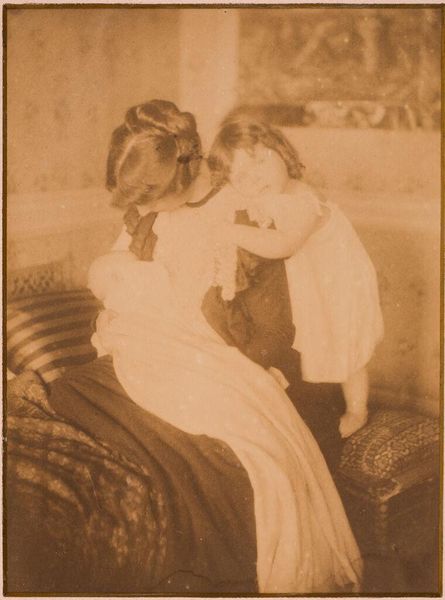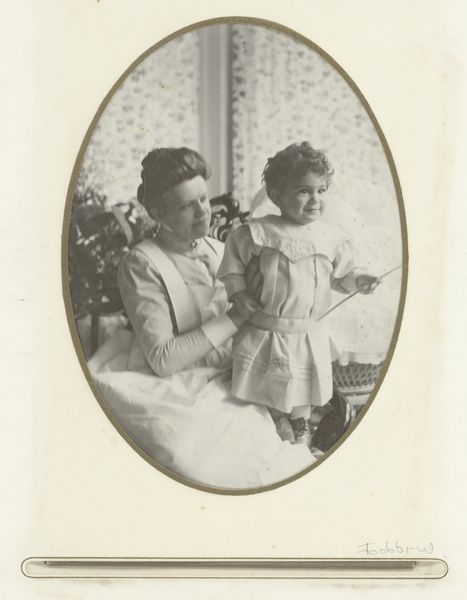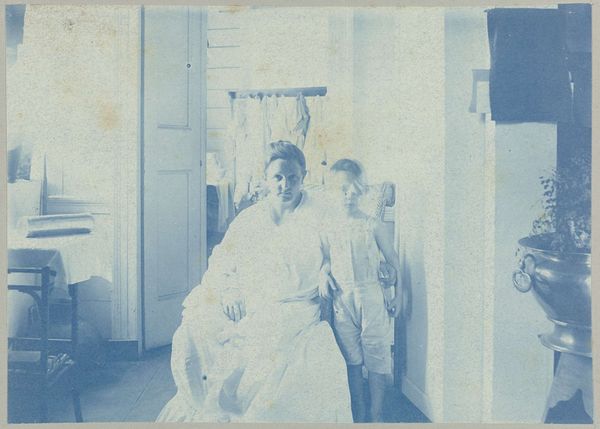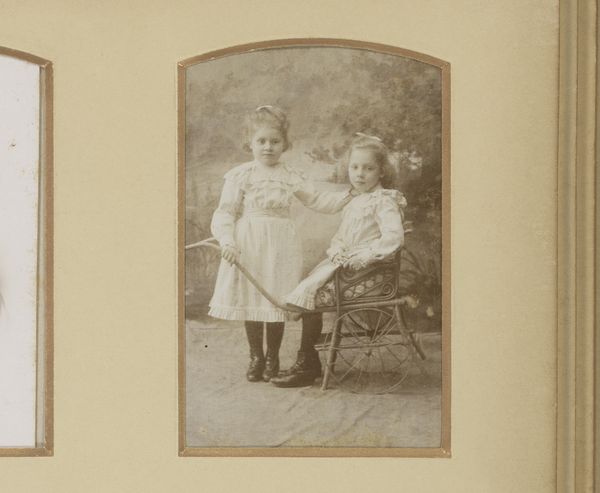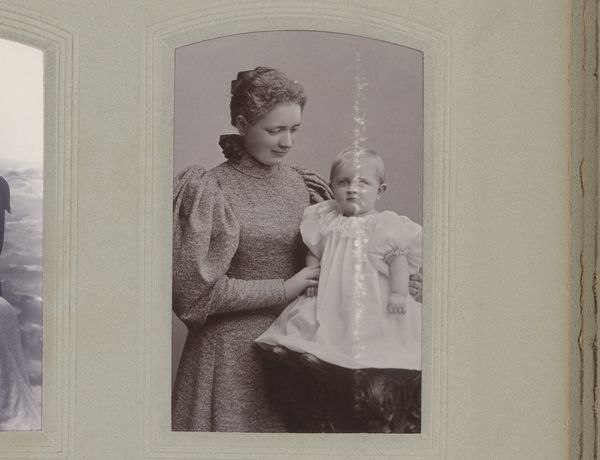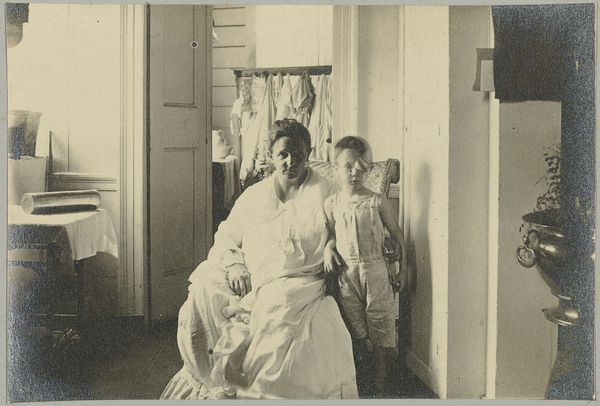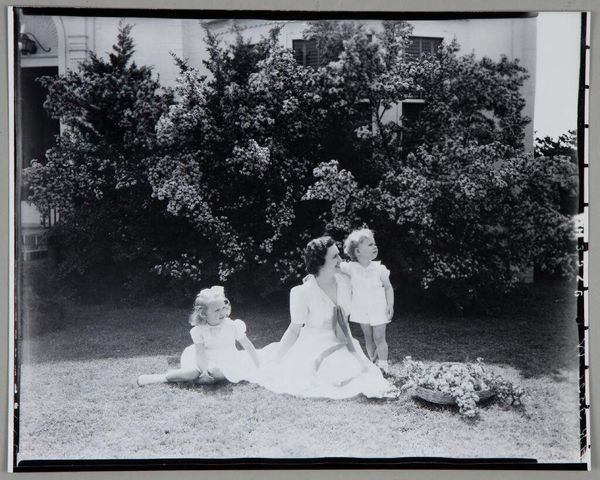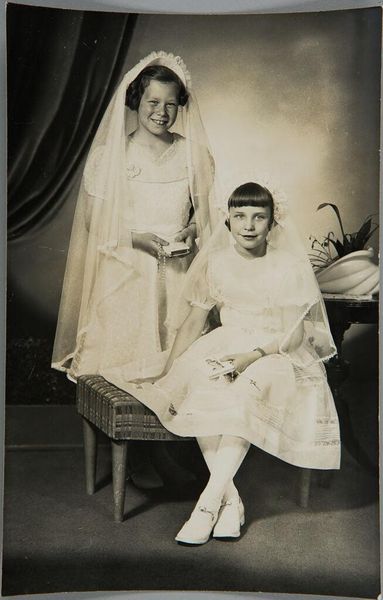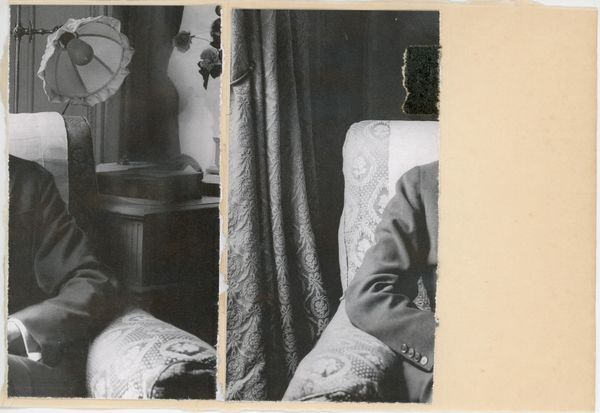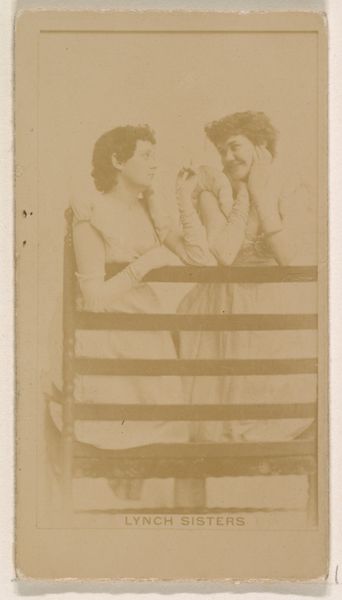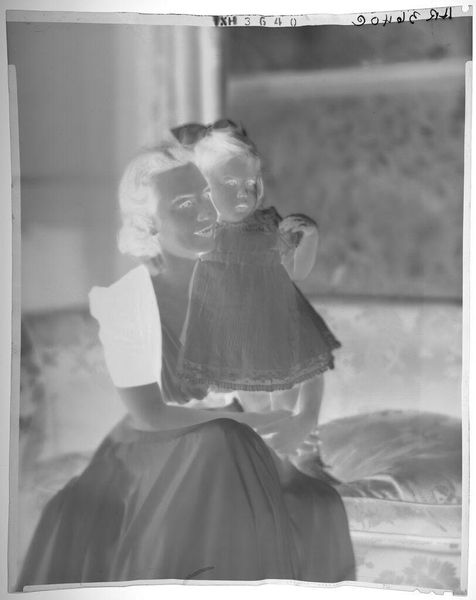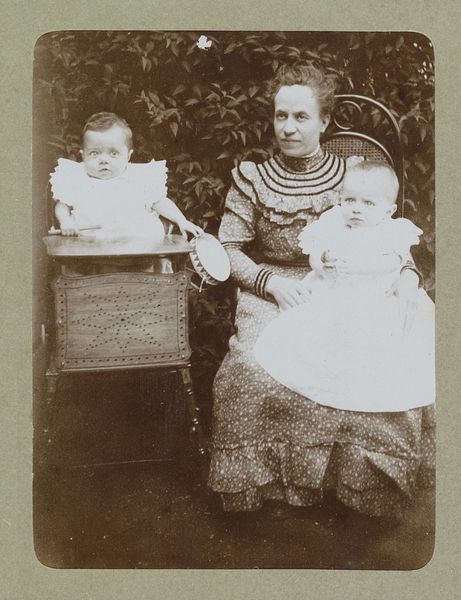
photography
#
portrait
#
photography
#
modernism
Dimensions: height 167 mm, width 117 mm
Copyright: Rijks Museum: Open Domain
Curator: Let’s take a look at this photographic print from between 1903 and 1910 by Hendrik Doijer titled "Pim gekwetst," or "Pim injured." It's a portrait, presented in these cool, almost ghostly blue tones. What's your first reaction? Editor: The monochromatic blue certainly creates a sense of detachment. It’s quiet, almost somber. The figures, a woman and a young child, appear bathed in a melancholic light, raising questions about the story behind their expressions. Curator: Given the title, that feeling isn’t accidental, I suspect. Let’s look closer. The materials and photographic processes around the turn of the century were still very much developing. The type of paper used and the printing process influenced the resulting tone, but the use of the color lends itself well to this image. Editor: Absolutely, this photograph has social dimensions that resonate even now. The injury implied by the title raises considerations of care, vulnerability, and potentially gender roles if we assume the woman is a mother. And, I might add, modernism was not immune to creating vulnerable communities. Curator: That's a perceptive take, and I agree. The "how" here is key. Doijer had access to specific technologies, paper types, and chemicals. The choices surrounding those—along with, say, the specific clothing, the domestic backdrop of the shot—speak to the making of bourgeois life and the resources needed to depict it, the materiality of identity at that time. Editor: And how such portraits performed an essential cultural function for affluent citizens as representations of themselves for the broader public to recognize. Curator: I would not contest that. Even though this photograph's technical aspects produce aesthetic distance, this image’s very existence tells us something fundamental about how the domestic sphere became newly understood at the turn of the century. Editor: Examining how the composition and affect within a seemingly straightforward image intersect with modern societal expectations offers ways to think critically about the medium's potential uses. Curator: I think we’ve shed some helpful, different types of light on Doijer’s photograph. The history of materials and making help underscore how the turn of the century enabled representations that are still charged with a specific emotion, in ways we often forget. Editor: And hopefully prompted consideration for our modern relationship with portraiture, especially now as our ideas regarding family shift again.
Comments
No comments
Be the first to comment and join the conversation on the ultimate creative platform.
